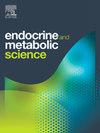Maternal thrombophilia and intrauterine growth restriction: A review of current evidence and clinical implications
Q3 Medicine
引用次数: 0
Abstract
Intrauterine growth restriction (IUGR) is a significant contributor to perinatal illness and death, arising from a variety of complex and multifactorial causes. Increasing evidence suggests that maternal thrombophilia, particularly deficiencies in natural anticoagulants such as Protein C, Protein S, and Antithrombin III, is a key factor in placental dysfunction and impaired fetal growth. These effects are thought to occur via placental thrombosis, impaired spiral artery remodelling, and reduced placental perfusion, which can compromise fetal growth. This systematic review, covering studies published between 1963 and 2025 and compiles and evaluates existing research on the association between thrombophilic conditions and IUGR. Although several studies have reported an increased prevalence of thrombophilia markers in pregnancies affected by IUGR, the overall evidence is inconclusive. Variability in study design, patient populations, and diagnostic definitions of both thrombophilia and IUGR contributes to conflicting findings and hinders firm conclusions regarding their role in diagnosis or intervention. Additionally, the review explores the role of anticoagulant therapies, including low molecular weight heparin, in enhancing pregnancy outcomes for women with these conditions. However, the evidence is limited by small study sizes, design constraints, and regional biases, underscoring the necessity for larger, multicenter investigations. Current findings highlight the importance of further research into the contribution of thrombophilia in IUGR. While thrombophilia screening may hold potential for risk stratification in selected high-risk populations, current evidence does not support universal screening in routine prenatal care. Larger, multicentred studies are needed before screening strategies can be formally recommended.
母体血栓病和宫内生长限制:当前证据和临床意义的回顾
宫内生长受限(IUGR)是围产期疾病和死亡的一个重要因素,由各种复杂和多因素的原因引起。越来越多的证据表明,母体血栓症,特别是天然抗凝血剂如蛋白C、蛋白S和抗凝血酶III的缺乏,是胎盘功能障碍和胎儿生长受损的关键因素。这些影响被认为是通过胎盘血栓形成、螺旋动脉重塑受损和胎盘灌注减少而发生的,这可能会损害胎儿的生长。本系统综述涵盖了1963年至2025年间发表的研究,并汇编和评估了关于血栓性疾病与IUGR之间关系的现有研究。尽管有几项研究报道了受IUGR影响的妊娠中血栓形成标志物的患病率增加,但总体证据尚无定论。研究设计、患者人群以及血栓和IUGR的诊断定义的差异导致了相互矛盾的结果,并阻碍了关于其在诊断或干预中的作用的确切结论。此外,本综述探讨了抗凝治疗,包括低分子肝素,在提高这些疾病妇女妊娠结局中的作用。然而,证据受到小型研究规模、设计限制和区域偏差的限制,强调了进行更大规模、多中心调查的必要性。目前的研究结果强调了进一步研究血栓形成在IUGR中的作用的重要性。虽然血栓病筛查可能在选定的高危人群中具有风险分层的潜力,但目前的证据并不支持在常规产前护理中进行普遍筛查。在正式推荐筛查策略之前,需要进行更大规模的多中心研究。
本文章由计算机程序翻译,如有差异,请以英文原文为准。
求助全文
约1分钟内获得全文
求助全文
来源期刊

Endocrine and Metabolic Science
Medicine-Endocrinology, Diabetes and Metabolism
CiteScore
2.80
自引率
0.00%
发文量
4
审稿时长
84 days
 求助内容:
求助内容: 应助结果提醒方式:
应助结果提醒方式:


